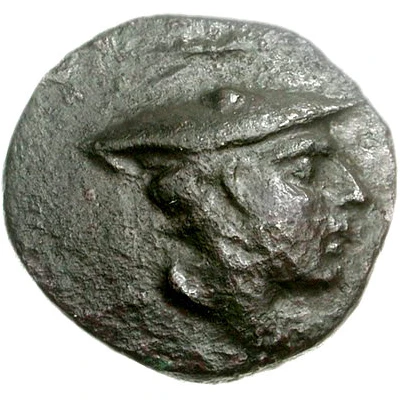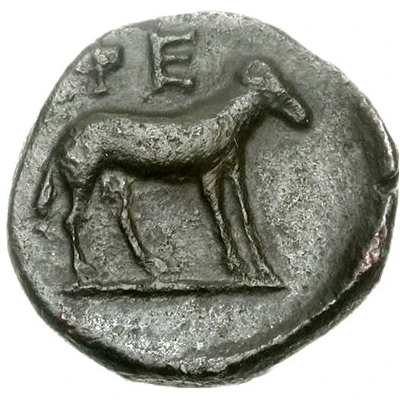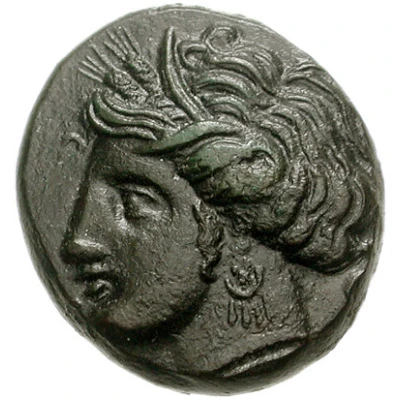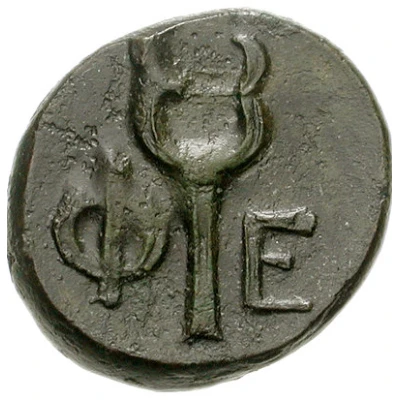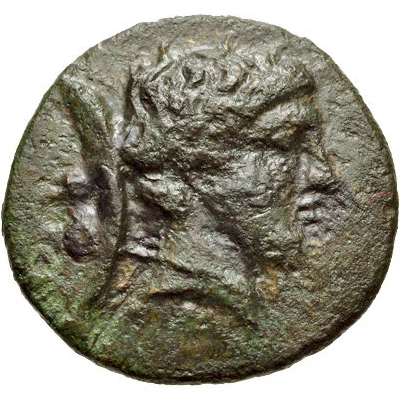
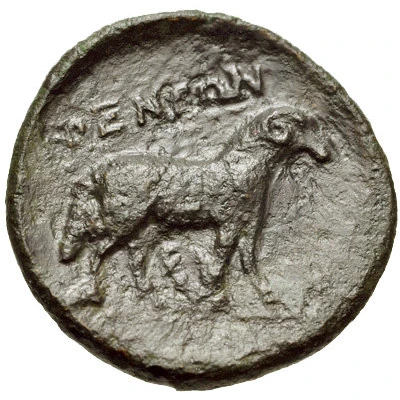

© Classical Numismatic Group, Inc.
Dichalkon 360 BC - 350 BC
| Bronze | 3.45 g | 18.0 mm |
| Issuer | Pheneos (Arkadia) |
|---|---|
| Type | Standard circulation coin |
| Years | 360 BC - 350 BC |
| Value | Dichalkon (1⁄24) |
| Currency | Drachm |
| Composition | Bronze |
| Weight | 3.45 g |
| Diameter | 18.0 mm |
| Shape | Round (irregular) |
| Technique | Hammered |
| Demonetized | Yes |
| Updated | 2024-10-09 |
| Numista | N#144752 |
|---|---|
| Rarity index | 100% |
Reverse
Mare grazing facing right with ΣI monogram below
Script: Greek
Lettering: ΦΕΝΕΩΝ
Interesting fact
The Dichalkon coin was used as a form of currency in ancient Greece during the 4th century BC. Its name "Dichalkon" means "two-handled" in Greek, referring to the two handles on the coin's reverse side. These handles were used to attach the coin to a string or cord, making it easier to carry and store. This coin was also unique in that it was made of bronze, a metal that was not commonly used for coins at the time. Instead, most coins were made of gold, silver, or electrum. The use of bronze for the Dichalkon coin may have been a deliberate choice to make it more accessible to a wider range of people, or it may have been due to the limited availability of other metals in the region. Regardless of the reason, the Dichalkon coin remains an interesting and unique artifact from ancient Greece's monetary history.
